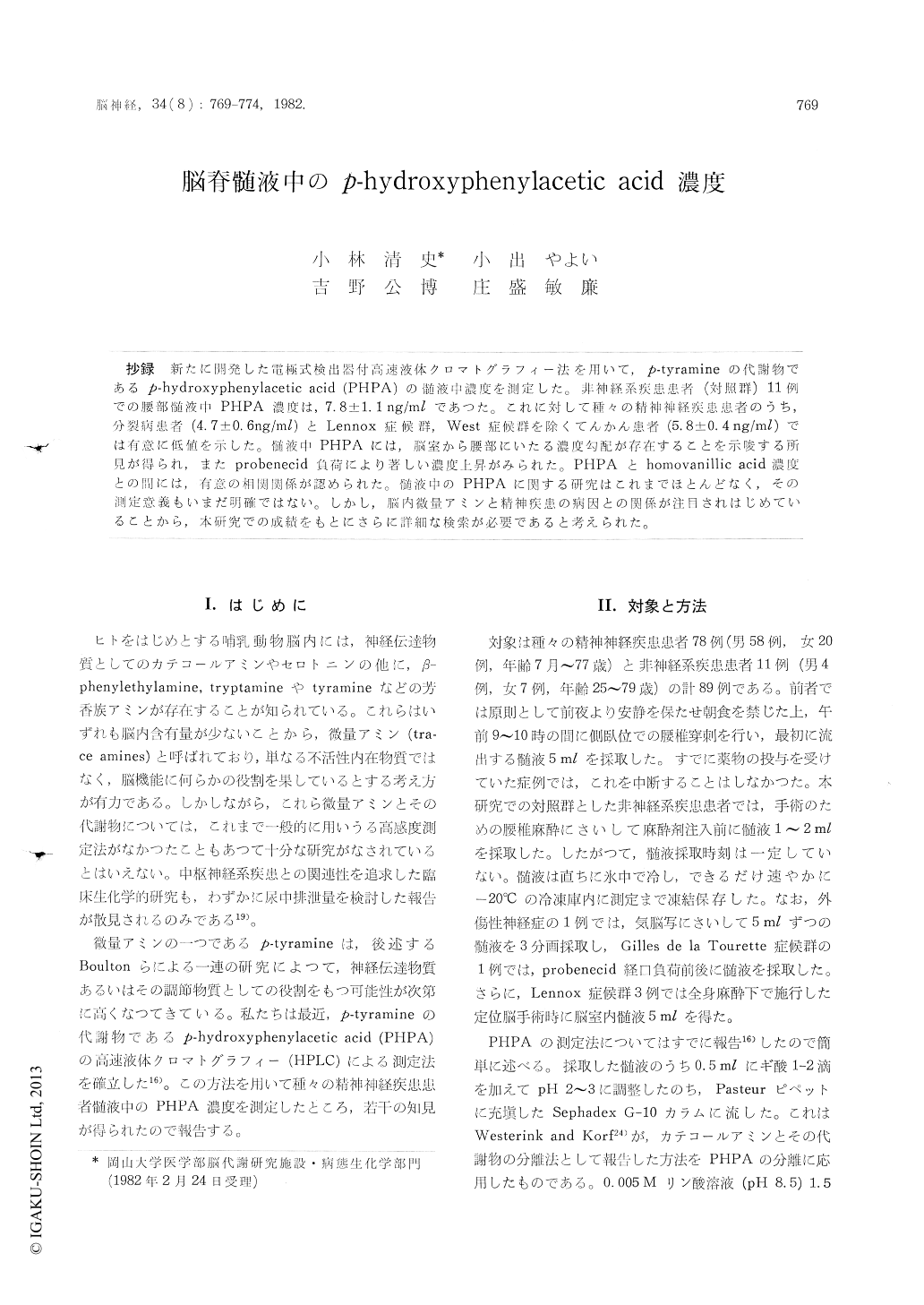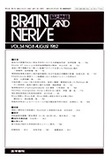Japanese
English
- 有料閲覧
- Abstract 文献概要
- 1ページ目 Look Inside
抄録 新たに開発した電極式検出器付高速液休クロマトグラフィー法を用いて,p-tyramineの代謝物であるp-hydroxyphenylacetic acid (PHPA)の髄液中濃度を測定した。非神経系疾患患者(対照群)11例での腰部髄液中PHPA濃度は,7.8±1.1ng/mlであつた。これに対して種々の精神神経疾患患者のうち,分裂病患者(4.7±0.6ng/ml)とLennox症候群,West症候群を除くてんかん患者(5.8±0.4ng/ml)では有意に低値を示した。髄液中PHPAには、脳室から腰部にいたる濃度勾配が存在することを示唆する所見が得られ,またprobenecid負荷により著しい濃度呈上昇がみられた。PHPAとhomovanillic acid濃度との間には,有意の相関関係が認められた。髄液中のPHPAに関する研究はこれまでほとんどなく,その測定意義もいまだ明確ではない。しかし,脳内微量アミンと精神疾患の病因との関係が注目されはじめていることから,本研究での成績をもとにさらに詳細な検索が必要であると考えられた。
Using reversed-phase high-performance liquid chromatography and electrochemical detection with a rapid one-step purification on Sephadex G-10 column, we have developed a sensitive technique to measure p-hydroxyphenylacetic acid (PHPA), the oxidatively deaminated metabolite of p-tyramine, in cerebrospinal fluid (CSF). The method has been shown to offer simplicity, high sensitivity and low cost for the analysis of PHPA. By using this method PHPA can be measured concurrently with the dopamine metabolites, 3, 4- dihydroxyphenylacetic acid (DOPAC) and homo-vanillic acid (HVA), in small amounts of CSF (0.5ml or less).
The concentrations of PHPA ranged 4.2 to 17.0 ng/ml with a mean value of 7. 8 ng/ml±1.1 SEM in lumbar CSF of non-neurological control patients. PHPA value is consistent with the results of earlier studies using different methods. PHPA concentrations in both schizophrenic (4.7±0.6ng/ ml, n=11) and epileptic patients (5.8±0. 4ng/ml, n=28) were significantly lower than those in control patients. A concentration gradient of PHPA was found along the ventricular-lumbar axis. Probenecid markedly increased PHPA in lumbar CSF. These observations suggest that PHPA in lumbar CSF is derived at least in part from the brain and eliminated from CSF by a probenecid-sensitive transport mechanism. There was a significant correlation between PHPA and HVA concentrations in CSF. This is an interes-ting finding since a reciprocal relationship between dopamine turnover and p-tyramine concentrations has been found in the striatum of experimental animals.
A number of recent studies suggest that p-tyra-mine may act as neurotransmitter or neuromo-dulator in specific neuronal systems. The present method should be useful in clinical investigations to clarify a functional role of p-tyramine in the brain.

Copyright © 1982, Igaku-Shoin Ltd. All rights reserved.


